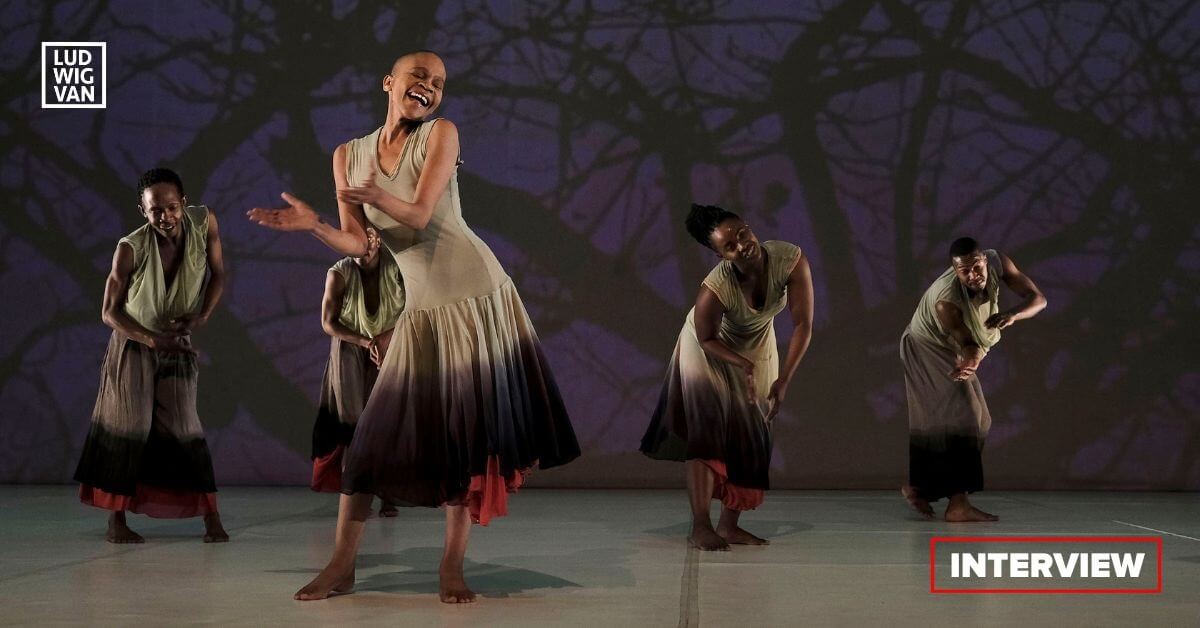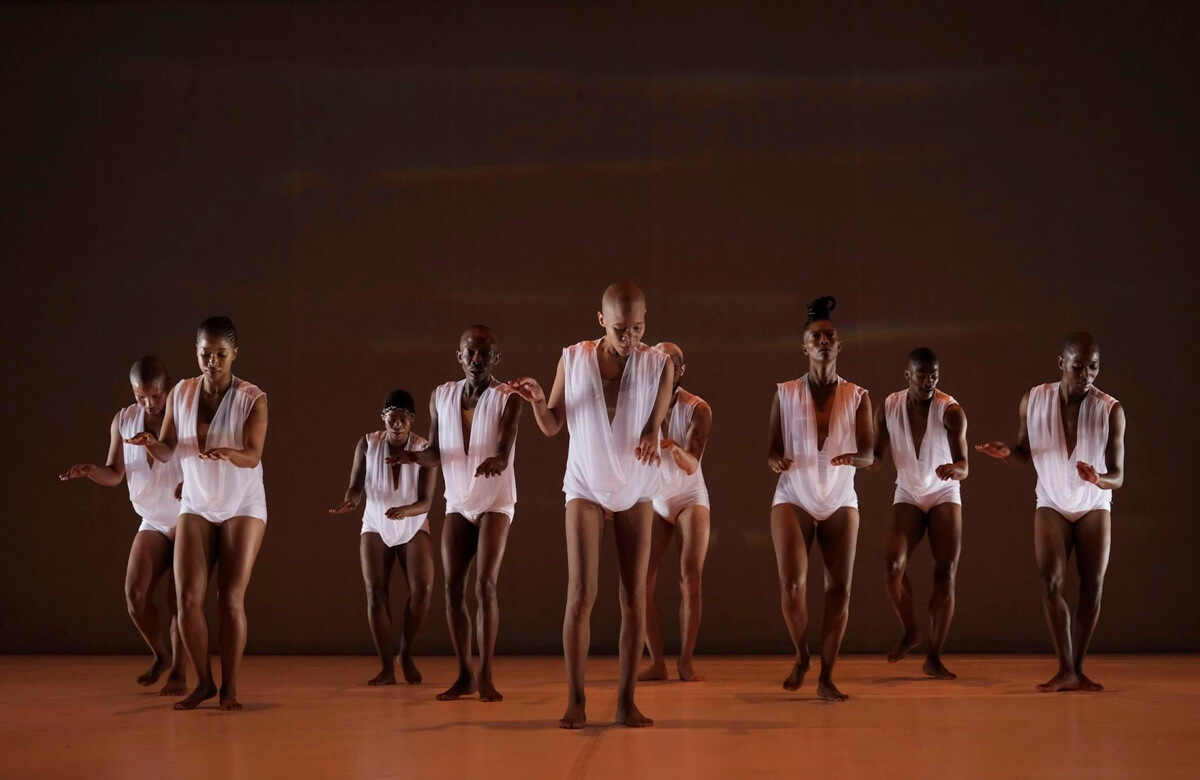
When South Africa’s award-winning choreographer Dada Masilo brings The Sacrifice to Harbourfront’s Torque International Dance Series, May 16 and 17, Toronto audiences will finally get to see what all the fuss is about. After all, her works have been seen in 25 countries and 150 cities around the world.
Johannesburg-born Masilo, 38, has become an international darling by reinterpreting the Eurocentric classics, including Romeo and Juliet, Carmen, Swan Lake and Giselle. For her latest piece, The Sacrifice (2021), she puts Stravinsky’s The Rite of Spring through the prism of the rituals, rhythms and sounds of her Tswana heritage. It is, by all accounts, a powerful fusion of traditional African arts and Western contemporary dance and ballet.
I reached Masilo by Zoom in Vancouver, the first stop of her North American tour.
You were born in the township of Soweto. Is that where your interest in dance began? I’m also curious about your early training.
I always liked to move, and when I was 10, I was part of an all-girls group called The PeaceMakers. We did Michael Jackson stuff, for example. We auditioned for a festival at The Dance Factory, and I was offered a chance for formal dance training. And, the circle has now come round, because I’m currently artist-in-residence at The Dance Factory.
I guess I was around 14 when I decided I wanted a dance career. For academic education, The Dance Factory sent me to the National School of the Arts, and after graduating at 17, I became a trainee at Cape Town’s Jazzart Dance Theatre.
I’m impressed that when you were 19, you were one of only 30 people accepted into Brussels’ P.A.R.T.S. out of 800 auditionees. This is one of Europe’s most prestigious advanced training schools. What was it like going from an impoverished township to Europe?
First, that audition was one of the most traumatic things I have ever done. I had never auditioned before. Second, I was miserable in Europe. It was a real culture shock, and living there was really hard, but the dance classes were incredible. There were a lot of different teachers of both ballet and contemporary dance. We also had improv classes as well as explorations in the creative process.
Yet, after just a few years in Europe, you came back to South Africa in 2008.
It was always my intention to go back home. I need that rage and anger of my own country to feed my creation process. Yet European money in South Africa is important as there is little government support for the arts.
When did you get interested in choreography?
I found it at P.A.R.T.S. because they forced us to create dances. I had to memorize a speech by Juliet which was incredibly difficult, and then make a dance, yet I ended up falling in love with Shakespeare. In fact, I became enthralled with all the classics. P.A.R.T.S. turned out to be a blessing in disguise because I learned how to make dances.

Do you have a philosophy of choreography?
When I was at P.A.R.T.S., an aunt died of AIDS, and my reaction was to create a solo to express my grief. It was called Dying Dying, and I set it to Saint-Saëns’ Dying Swan music. That’s when I knew I have to create work that makes people feel something. Dance is not worth doing if it doesn’t have a visceral impact. I don’t understand abstract dance which has nothing for my soul.
How did you gain international attention?
I made a solo called The Bitter End of Rosemary based on Hamlet which I performed in Paris and other places in France, and an agent saw me. When I started to do group works, he became my booking agent, and we started off in festivals.
You also perform in all your pieces.
That’s because I will always be a dancer first.
Your career so far has been about reinterpreting iconic works of the classics.
I was led by my curiosity about them.
In the case of Shakespeare, dance helped me to understand the difficulty of the language. It served my need to know. With Romeo and Juliet, since everyone knows the ending, I started with the lovers being dead. With Carmen, it was her passion that entranced me, and I actually learned flamenco for that piece. For Swan Lake, I fused classical ballet with African dance just to see what would happen. That was a lot of fun. For Giselle, it was giving the annoying Albrecht his just desserts, or as someone in the audience told me, someone finally got rid of the man.
I have also made all kinds of music, classical and otherwise, a part of my life.
And now there is Stravinsky’s The Rite of Spring which you call The Sacrifice.
At P.A.R.T.S. we learned the actual choreography. When I listened to the music, I was intrigued by the complex rhythms. However, it is a short score, around 39 minutes, and the copyright says that you have to use the whole score, and you can’t mix it with other music, or add anything to the beginning or end. So, to make a full-length work, I had a new score of African music created by the composers listening and reacting to Stravinsky.
What is your storyline?
It is set in rural Africa. It had to be rural because rituals are important in the piece. It is about a mother who sacrifices her child, giving her child back, so to speak, but the child fights it. In reality, neither the mother nor the child has a choice. Men are the rulers.
The Sacrifice is built around Tswana traditions which is the national heritage of Botswana, and yet, you are South African.
I found out late in life that I have Tswana heritage. I’m even from royalty. It was something I never knew about as a kid. Imagine being 38 and being new to it. I’ve spent three months with a Tswana teacher, learning the rhythms and rituals. I discovered that the Tswana is deep within me. Those roots are there always, and you can never take them away. You could say the piece is a mix of Tswana, South African and contemporary dance. In other words, The Sacrifice is all African.
How important is your African heritage to your art?
All of Africa is rich in culture. If you live in Africa, you can’t escape it. Our task is to figure out how do we celebrate our culture. Black people have rituals for everything — for weddings, funerals and everything else. Over centuries, we have created something important. We have to keep ourselves culturally intact.
I’m assuming that living in South Africa these days can’t be easy.
It’s not. We have something called load-sharing which means the electricity cuts out, and you never know when the power is going to go off. That means we can’t tour in our own country because it could happen in the middle of a performance, and you can’t do that to an audience. It’s a time of chaos and confusion.
I know you don’t like being categorized as a choreographer.
I hate being put in a dance language box. I don’t want to have a signature. I do fusion work, and fusion is what it is. Just come and watch it. My work contains everything that I respect and trade in.
I’m actually exhausted giving people what they want from me. I’m tired of being a product, yet I do work that means so much to me, and that aspect hasn’t really been recognized. I need to take some time out and think about what I really want to do, and not what people want me to do. By nature, I’m a gatherer. I want to gather people to me because I have a gift I want to share.
Some have seen your work as feminist and political.
Not so. I see my work as personal. The Sacrifice, in particular, is based on a true story. I knew a mother who lost her daughter. She had to bury her six-month-old child. The Sacrifice is about grieving and healing. It has nothing to do with anything political. As well, in 2015, I was on tour when my grandmother died. She had been my best friend, so another sacrifice was me having to be on stage, and not going back home.
Are you getting closer to creating an original dance not based on the classics?
Not yet. I’ve needed the classics, but it is still intensely personal work. I’m not ready to make peace with it.
So when you are not touring abroad, or creating new pieces, what are you doing?
I’m sleeping or reading Hamlet. I describe myself as the picture of a Siamese cat lying on a couch.
Tickets and more information about the May 16 and 17 performances [HERE].
#LUDWIGVAN
Get the daily arts news straight to your inbox.



